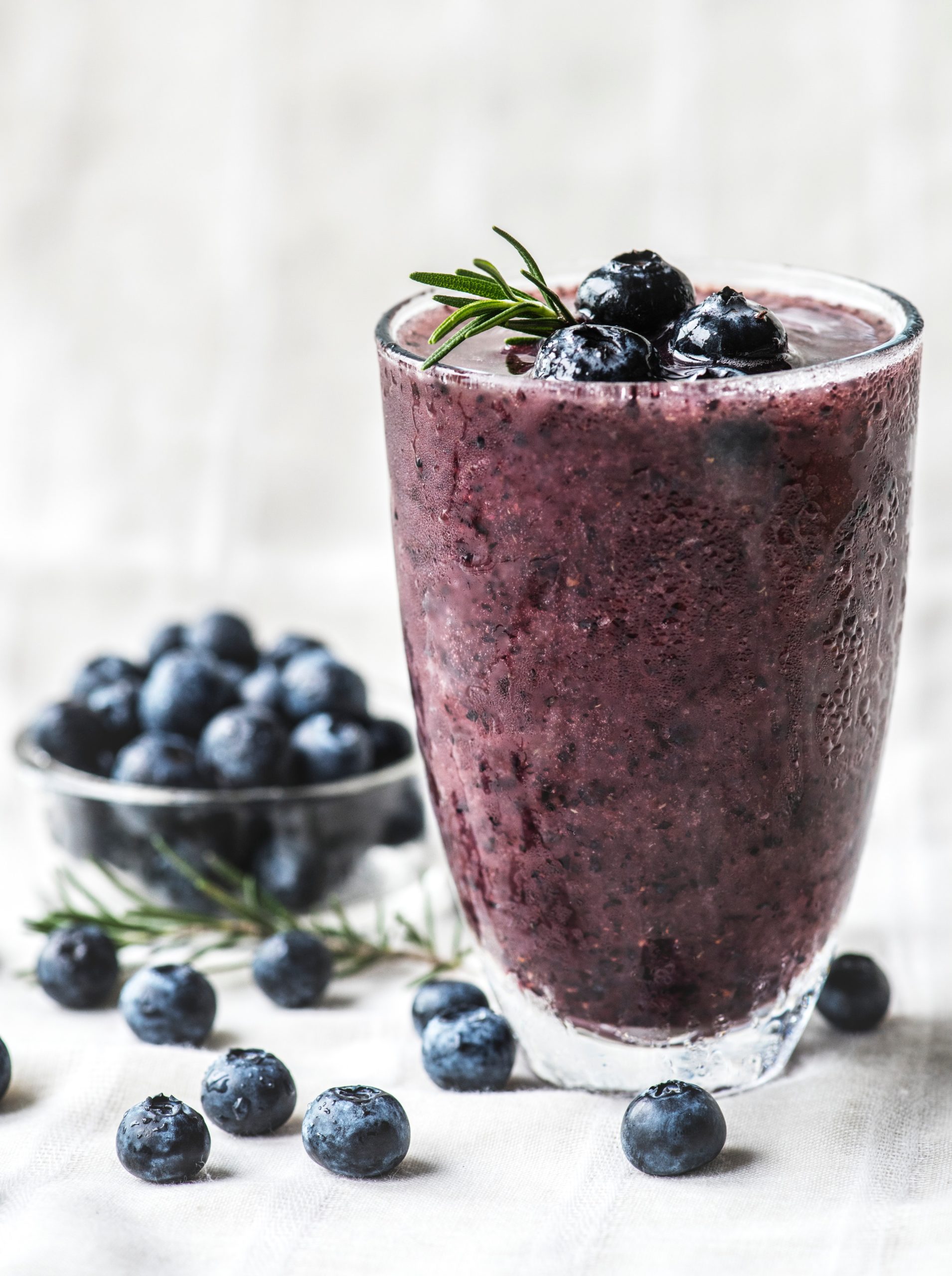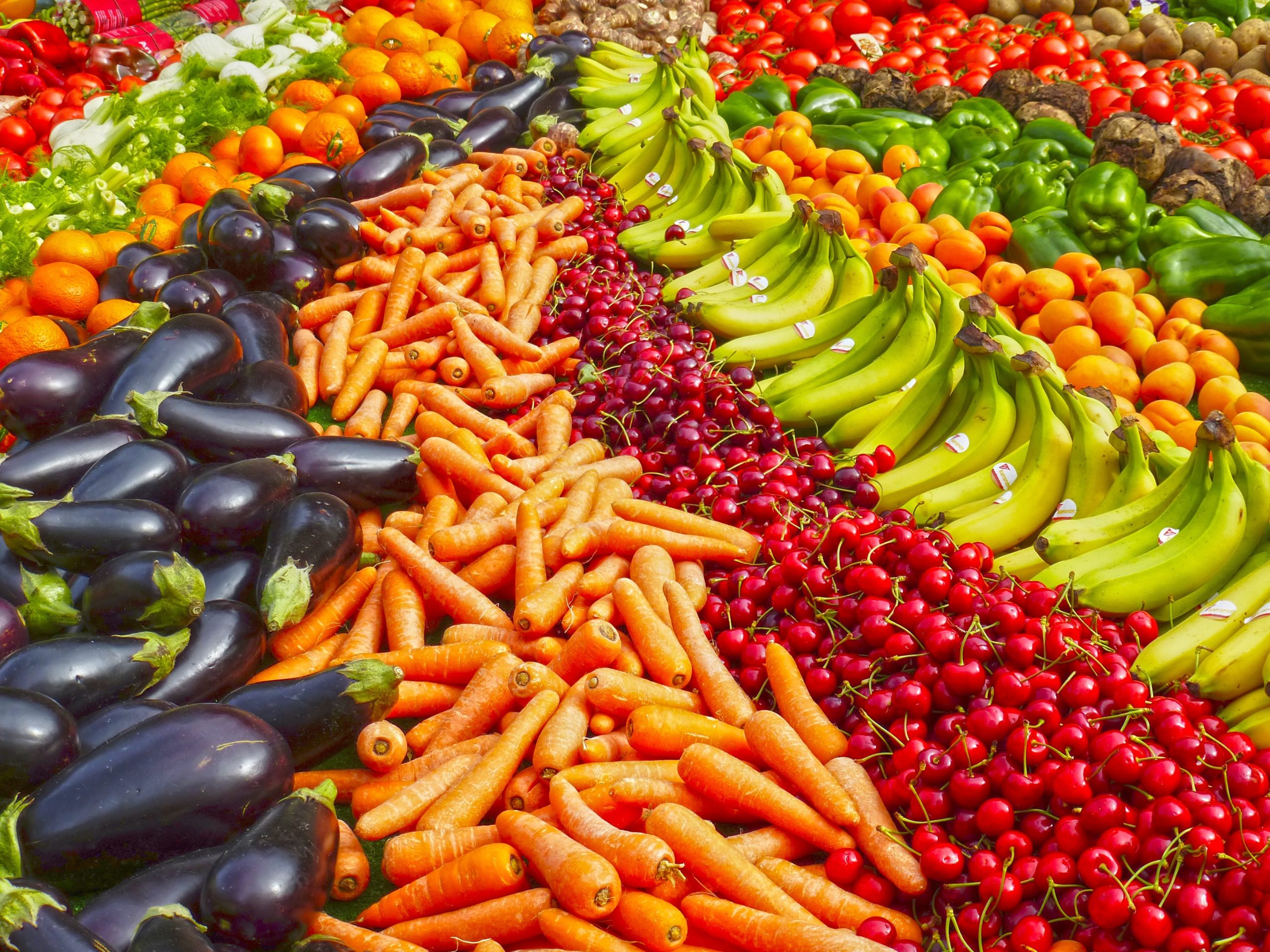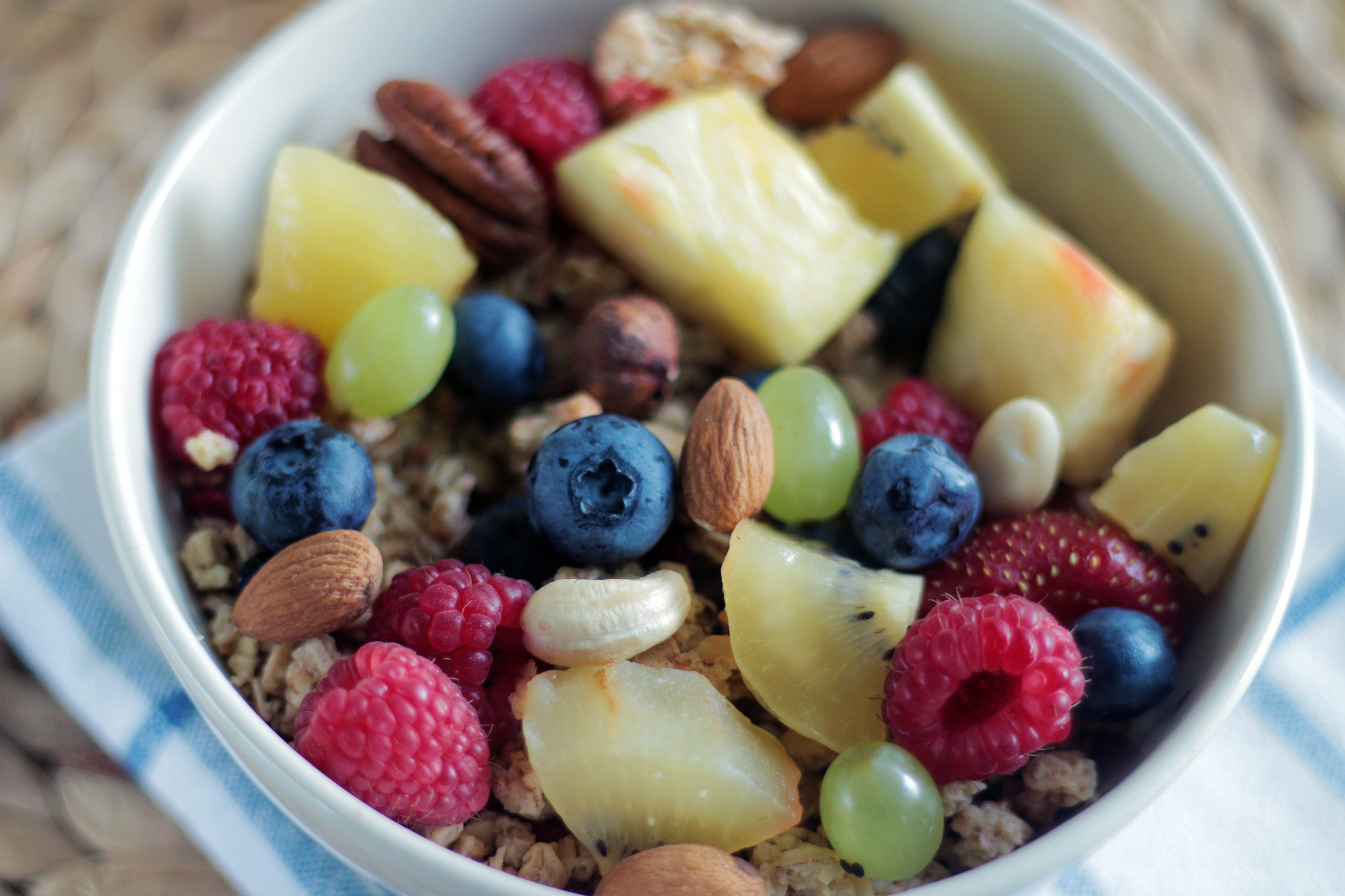Nutrition is playing a crucial role in brain health, particularly in the areas of depression and dementia. Researchers are identifying key nutritional elements that play an important role in reducing depression and dementia risk and doctors are looking to implement this information into treatment protocols.
Scientists have been working on a list of Brain Essential Nutrients (BEN) and are developing the BEN Scale to determine where a food sits in terms of brain health.
Essential nutrients for brain health include:
- long-chain omega 3 fatty acids
- magnesium
- calcium
- fiber
- vitamins B1, B9, B12, D and E
When you read that list – doesn’t it sound like breakfast? And breakfast is important!
Breakfast is the foundation meal for your brain, so that it can pay adequate attention, remembers what you experience and learn.
Breakfast is the first meal after a long period without food. When you consume a good breakfast you increase your problem solving abilities and attention. Energy levels are also increased and mood swings are reduced.
So take time and make sure breakfast is an important part of your day.
Another important factor is re-hydration. Breathing throughout the night is expected (I breathe throughout the night and I sure hope you do to), but it is also de-hydrating. And we know that water is very important for brain health. So make sure that you re-hydrate first thing in the morning.
The BEN Scale in real life
So, how do you implement the BEN Scale into your everyday life?
Long-chain Omega 3 fatty acids, are a vital nutrient for brain structure, but they cannot be synthesized by the body. Instead, these long-chain omega 3 fatty acids must be developed from short-chain omega 3 fatty acids found in the diet.
Brain function relies on dietary intake of DHA to support the brain’s grey matter. DHA is a major structural component of our brain. It is the most abundant omega-3 fatty acid in the brain.
The role of DHA in Alzheimer’s disease is the subject of ongoing research.
Foods that are high in omega-3 fatty acids are:
flax (11.4 grams per 85 gram serving), hemp, herring and sardines (1.3 – 2 grams per 85 gram serving), mackerel, salmon, halibut, tuna, as well as, eggs, strawberries, broccoli, mutton and lean red meat.
Getting the Most Out of Flax
One trick to eating flax seed in a way that allows your body to benefit from the nutrients in it, is to grind the flax seed with a pepper grinder and sprinkle it on your food. This aids in digestion and getting the most nutritive value out of the food. It also has very little impact on taste.

Magnesium
With respect to the brain, magnesium is important for nerve impulse conduction.
Green leafy vegetables such as spinach are rich in magnesium. So are legumes, nuts, seeds, and whole grains. In general, foods containing dietary fiber provide magnesium. Some breakfast cereals have been fortified with magnesium. Low fat milk and yogurt also contain magnesium.
Another way to get magnesium into your system is using Epsom salt foot baths. Soak your feet or take a bath with Epsom salts in the bath water. Not only will you get magnesium but you will also reduce stress levels and relax….all good things for your brain.
Calcium
Calcium is an important part of the electrical signalling within the nervous system. It also plays a central role in the release of neurotransmitters by neurons in the brain. This is very important for memory storage and retrieval.
Individuals with high blood pressure are often put on calcium channel blockers to help lower blood pressure and widen arteries. This may have unintended negative effects on memory storage.
In a study begun in 1989 and reported in 1997, the brain damage done by calcium channel blockers was outlined. Almost 6000 seniors receiving calcium channel blockers had MRI scans and memory tests. The MRIs revealed brain damage in the areas that are associated with memory.
Sinc sufficient levels of calcium are important for brain health, if you are being treated for high blood pressure, it is a good idea to discuss your calcium levels with your doctor.
Dairy products are a great source of calcium. Some vegetables are also a source of calcium. Calcium is found in seaweeds such as kelp, nuts and seeds such as almonds, hazelnuts, sesame and pistachios, blackstrap molasses, beans, figs, quinoa, broccoli and kale.
But it is important to note that too high levels of calcium can be toxic.
Typically, you will not hit vitamin or mineral toxicity through diet alone – supplements are usually the culprit. So, make sure you discuss with your doctor the levels of vitamins in your blood and determine together what is appropriate for you.
Fiber – Prebiotics and Probiotics
Prebiotics are carbohydrates that cannot be digested by the human body. Instead, they are food for probiotics. Probiotics are “good” bacteria that help keep your digestive system healthy. Research is starting to draw a close connection between the health of your gut and the health of your brain. So, it is important to pay attention to gut bacteria.
Foods rich in prebiotics are whole grains, asparagus, bananas, Jerusalem artichokes, oatmeal, and legumes.
Probiotics can help lower LDL – the bad cholesterol. Food rich in probiotics are foods like yogurt and lean protein

Vitamins B1 (thiamine), B9 (folic acid), B12 (cobalamins), D and E.
The B vitamins are a class of water soluble vitamins. In a supplement format, they are usually grouped together in a b-complex vitamin. The B vitamins are important for cell metabolism.
B1 – thiamine – is a coenzyme in the breaking down of sugars and amino acids. It plays a central role in the release of energy from carbohydrates. The best sources of thiamin include yeast extract, pork, fortified breakfast cereals, enriched grain products and meatless soy products.
B9 – folic acid – is important for the making and repairing of DNA – especially important in cell growth. Dark green vegetables like broccoli and spinach and dried legumes such as chickpeas, beans and lentils are naturally good sources of folate. In Canada, folic acid is added to all white flour, enriched pasta and cornmeal products.
B12 is involved in the metabolism of every cell in the human body and in the formation of DNA. It is essential to produce nerve sheaths. B12 supplementation is linked to improved cognition and may be an area to explore with your doctor.
The best sources of Vitamin B12 include: eggs, milk, cheese, milk products, meat, fish, shellfish, and poultry.
Vitamin D
There has been a clear link between Vitamin D deficiency and increased dementia risk.
One of the difficulties is that age becomes a factor when thinking about adequate levels of Vitamin D. We face an increased need for Vitamin D after the age of 50.
The optimal way to get Vitamin D is through exposure to the sun. In fact, our body synthesizes Vitamin D from sun exposure and doesn’t really need to get it from food. However, there are many factors which can affect sun exposure – like sunscreen, cloud cover, pollution and skin pigmentation.
As well, the months where the sun is low on the horizon means that the sun is not penetrating the atmosphere in an optimum way. This means the winter months in Canada and the northern United States are not optimal months for Vitamin D synthesis from the sun. All of these factors can limit sun exposure and can cause a decrease in Vitamin D levels.
While our bodies can synthesize Vitamin D after exposure to (UVB) ultraviolet rays from sunlight, everyone faces different factors. Therefore, it is difficult to give a general rule for sun exposure. The best idea is to be sensible. A light pink or tan is good – burning is bad.
But once again – those of us over the age of 50 have a reduced ability to manufacture Vitamin D from sun exposure…and if you live in Canada or the northern United States, getting enough sun is particularly difficult in the winter months.
So other than moving south in the winter months, what are your other options?
Light Therapy
You might want to invest in UVB lights, which are typically available from home health stores. As discussed in our blog post on sleep, you can use bright light therapy not only to improve sleep patterns but also to facilitate the production of Vitamin D. Use these lights within the recommended daily limits as they can be counterproductive if used too late in the day.
A second option is to improve dietary intake of Vitamin D rich foods. Fatty fish like salmon, tuna and sardines are great sources of this vitamin, as are eggs. Many dairy products like milk or yogurt and citrus fruits and cereals are now fortified with Vitamin D.
Another option is to take Vitamin D supplements. Interestingly, the Canada Food guide – which typically doesn’t recommend supplements – suggests that individuals over the age of 50 take a daily supplement of 400IUs of Vitamin D. This is on top of the recommended two glasses of milk.
But too much supplementation can also be a bad thing. Vitamin D in doses of 10,000IUs has been shown to reduce bone density.
The essential point is that you do need to think about how much Vitamin D you are currently getting through nutrition and sun exposure and consider how you might add additional Vitamin D to your diet if you are deficient.
The link between deficient Vitamin D and dementia risk is too strong to be ignored.
Vitamin E
Free radicals are unstable molecules that attempt to bond with other molecules and cause damage to the healthy cells. Vitamin E is a source of antioxidants that can work to heal the damage caused by free radicals.
The best dietary sources of Vitamin E are fortified cereals, sunflower seeds, almonds, tomato purée, spinach, and peanuts.
In Conclusion
A diet focused on Brain Essential Nutrients means a diet high in plant-based food like mustard greens, spinach, bell peppers, kale etc.
But it also means meat and this is their list that I found so interesting … organ meats, game meats, bivalves (mussels, clams, oysters), mollusks (octopus, squid, snails) and fish (salmon, sardines) … and a big plug for grass-fed or free-range animals.
The scientists involved in the study developing the BEN scale cautioned against a pure vegan or vegetarian diet as creating a risk to missing some significant nutrients that can lead to permanent neural damage.
Another key area for brain health is to reduce the consumption of sugar, refined carbohydrates and avoid trans fats.
I think the BEN scale will be a useful tool that individuals can use to start creating their own personal plan for healthy living.
So, start your plan for healthy living by enjoying a great breakfast!
My favorite is homemade granola – what is yours?





I really appreciate this post. I’ve been looking all over for this! Thank goodness I found it on this blog. You have made my day! I think this is an engaging and eye-opening material. Thank you so much for caring about your content and your readers.
Hello! Very good material. I recomme also the Natural Way to Supercharge and Maintain A Healthy Brain & Hearing
Synapse XT brings together 8 Powerful Ingredients that Work in Synergy to Help Support Your Brain and Hearing Health!
https://bit.ly/2OD1PGj